While paddling downstream is a pleasant experience most of the time, paddling upstream can be tricky. With that said, if you have a strategic approach, you can go against the current in most rivers.
Experienced kayakers know the answer, but newbies often wonder if paddling upstream over long distances is a crazy undertaking. If you are a new kayaker brooding over this question, keep reading.
This post centers around kayaking upstream. Here we will try to answer all your questions about paddling against the current and provide some tips to make the undertaking less challenging for you.
Table of Contents
Can You Kayak Upstream?
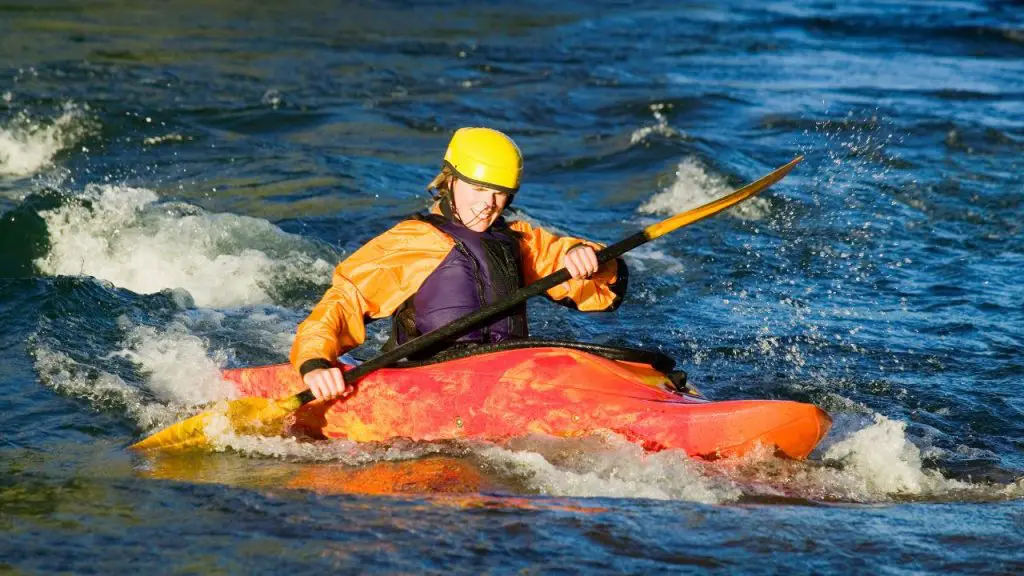
Yes, you can paddle upstream, but for this you will have to understand river flow and identify the sections of the river where the current is relatively weak. If you are not a bit strategic, paddling upstream can be difficult and dangerous.
You have to consider some factors such as landforms, strong winds, water conditions as well as your paddling skills and fitness level.
How Hard Is It to Paddle Upstream?
For experienced paddlers, paddling upstream is not that difficult, but beginners often find it challenging. It is important to accept the fact that paddling upstream is remarkably tougher than going downstream.
Always avoid the middle section of the river where the current is strong. Stay close to the edge of the river. If there are strong winds, paddling upstream is a lot harder or a lot easier depending on the direction of the wind.
Pros and Cons when Kayaking Upstream
While paddling upstream is usually challenging, your effort can be rewarding in some ways. Here are the pros and cons of kayaking upstream:
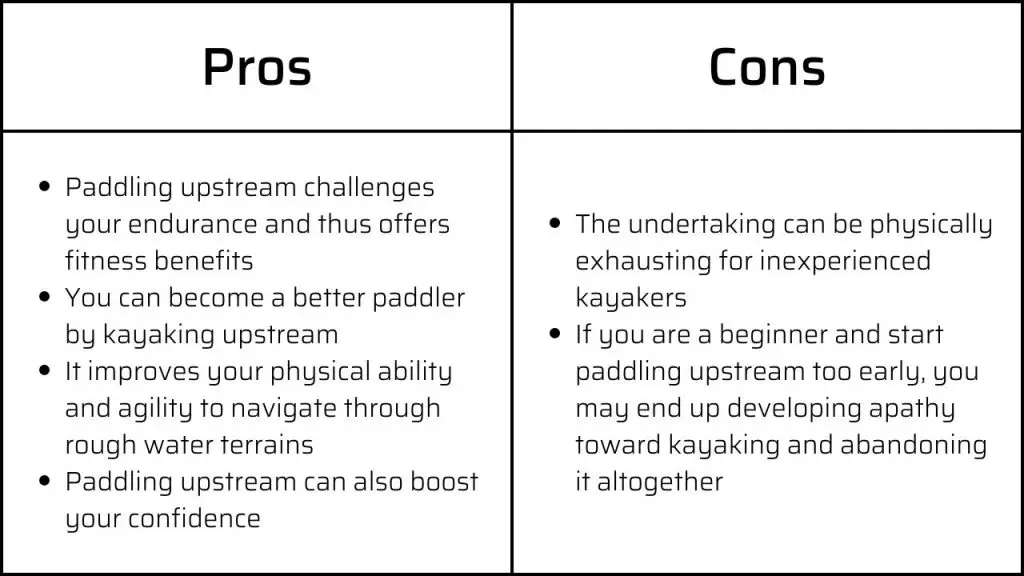
How To Paddle a Kayak Upstream
In order to minimize the difficulty of paddling a kayak upstream, you have to avoid paddling toward the centerline, because the current is stronger there. Apart from that, you have to do a little bit of research and understand the water flow. Here are some solid tips:
Research
Before you dive into action, do a little bit of research. Learn about the landforms and other features of the water body, and identify the obstacles, if there are any. The water conditions of the river will largely determine your level of difficulty when paddling upstream.
Also, take your paddling skills and fitness level into consideration. If you are an inexperienced kayaker, we recommend you exclusively paddle downstream before you paddle upstream.
The point is to get a feel of the sport first. Once you have learned how the vessel moves along the water, you will find it less challenging to go upstream.
Hardshell kayaks are better than inflatable ones in terms of maneuverability. Therefore, if you are planning to kayak upstream, consider getting a hardshell kayak.
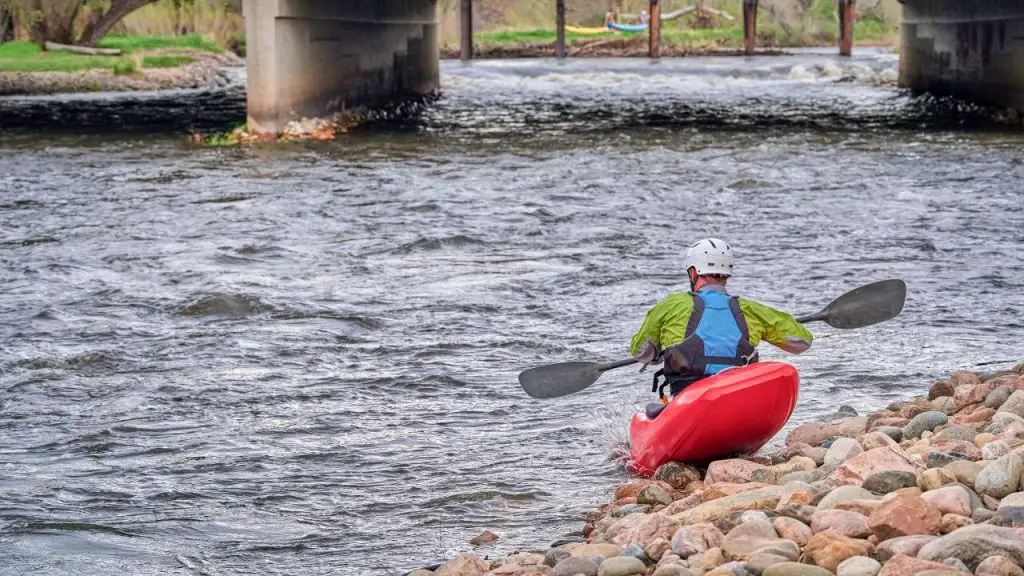
Understand Water Flows and Wind Direction
Before you commit to the water, learn about the water terrain. Check the river’s velocity. If the water speed is over 5km per hour, going against the current will be really hard.
Do not overlook the direction of the wind. A combination of strong currents and strong winds can be very hard to handle. But if the winds are at your back, you will find it easier to paddle upstream.
Avoid V-shaped formations in the water. These shapes are formed by strong currents, appearing in the upper course of a fast-flowing river with steep gradients. From a distance, the steep-walled sides look like the letter “V”.
It can be an upstream or downstream flow. An upstream flow indicates that the channel is deep and the water is moving fast in the middle and relatively slow along the banks.
And if the shape points upstream, it means there is an obstruction such as a rock just below the water surface, causing the water to flow faster. Navigating through V-shaped water flows can be tricky, even if you are an experienced kayaker.
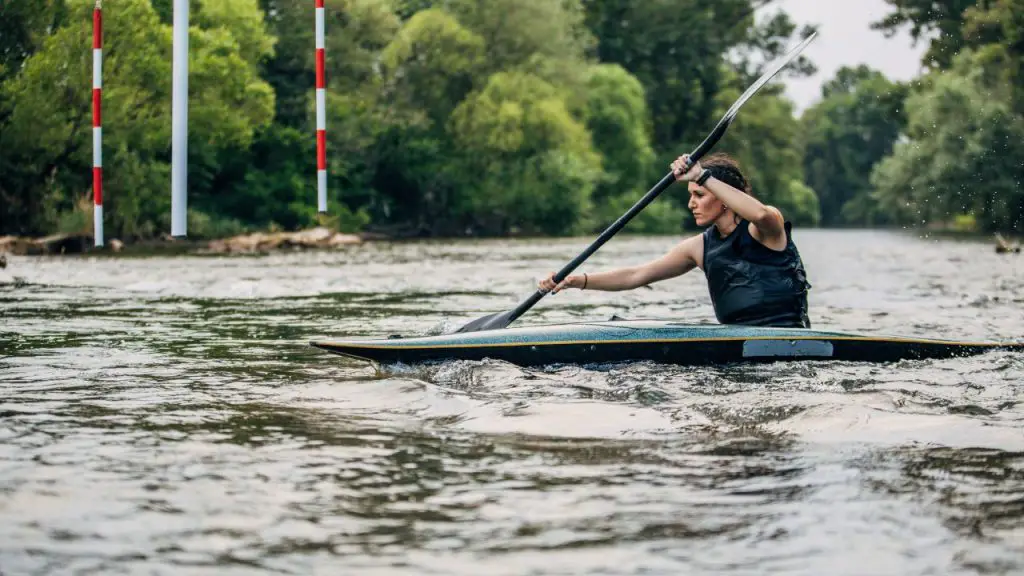
Learn How to Ferry & Cross The Current Without Losing Progress
Ferrying is a technique to cross a current without having to move too far downstream. This technique allows you to cross a river with a current without sacrificing too much of your progress upstream.
For this, you need to specify a spot where you want to reach. In order to cross the eddyline, you have to choose your boat angle. Keep the bow at a slight angle. Your decision should be based on factors such as the distance of the eddies, and the water speed.
It all comes down to how fast you should go when paddling toward the eddy. When you are in the current, you have to approach the eddy with strong yet smooth strokes. It takes some practice.
Remain on The Sides or The Edges of The River
As we have stated, the currents are relatively weak on the edges of the river, so try to stay close to the edges. It will help you maintain a steady pace and stay safe.
As a river gets narrow, the current gets stronger because there is a smaller space for the water to pass. Therefore, as you approach a narrow channel, paddling against the current will be a lot harder. Even in such a situation, you can kayak upstream if you stick to the edges.
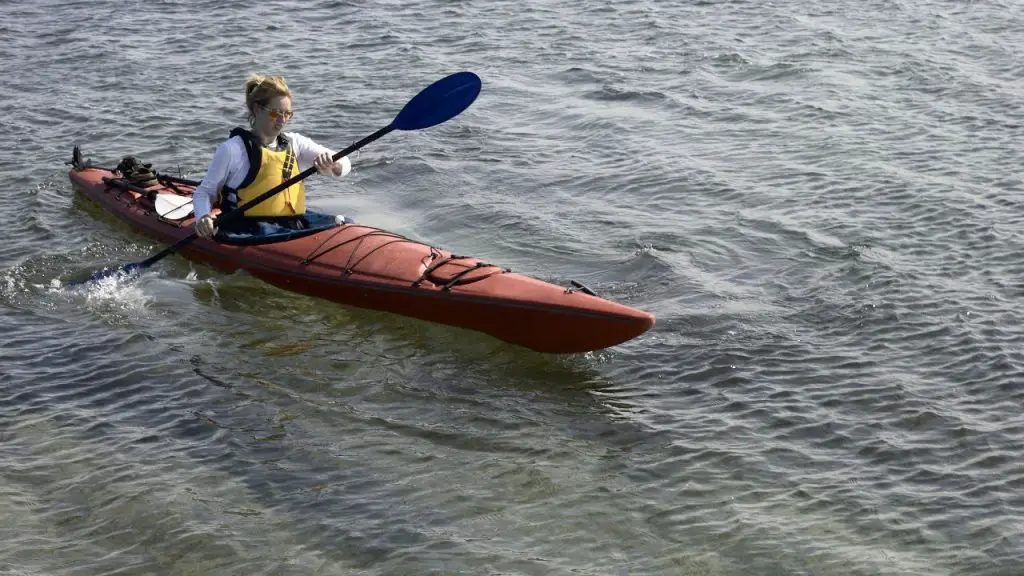
Tips to Improve the Quality of Your Upstream Paddling
Paddling upstream can be tough even for experienced kayakers, but a little bit of strategy can make the process easier. Here are some tips that you will find useful:
1 .Paddle upstream first and then go downstream. Thus, even if you get tired in the first half of your expedition, you will find it easy to go downstream because it will not require that much of a physical effort on your part. Therefore, you will feel energetic throughout your paddling expedition.
2 .Stay close to the edge of the river, where the current is not that strong. This strategy will give you adequate maneuverability and help you stay safe. As you do so, however, watch out for natural obstructions and wildlife. Also, always remember that the current is stronger where the river is narrower.
3 .When you are kayaking upstream in shallow waters or close to the river’s edge, push poling can be very effective. Instead of paddling, you can push yourself off the bottom, and thus gain more speed.
4 .Do not paddle when you are close to pileups of bush or under low-hanging trees, because the current can trap you there.
5 .Do not step on the ground when you are in a part of the river where the current is strong.
6 .Examine the direction of the wind. If it is a headwind, do not paddle upstream. Going against both the water flow and the wind can be an exhausting experience.
What To Do if You Can’t Paddle Upstream?
No matter how strategic or skillful you are, you may not be able to paddle upstream in some cases. It is good to have an alternative in mind for such a situation.
If it is a shallow river, wading through the waters is the most intuitive thing to do. Just go on foot, lugging the boat somewhere behind you. If you want to go to another body of water nearby, consider physically lifting your kayak and carrying it overland to the next body of water.
If needed, get a shuttle service for carrying your kayak and gear. Depending on the kayaking spot, a shuttle service will cost $10 to $15.
FAQs
What are the three golden rules to paddling in a kayak?
First, engage your entire upper body for the strokes. Second, choose your paddling location wisely. And third, make sure you have a plan in case you have an accident.
Know what to do if you capsize. When followed, these three golden rules of kayaking can help you paddle efficiently and stay safe.
Should you kayak upstream or downstream?
Paddling upstream is always tougher than paddling downstream. If you want to paddle both upstream and downstream on your trip, consider going upstream first and then floating downstream as you return. This approach will keep you energetic throughout your paddling expedition.
Can you paddle against the current?
While paddling against the current can be difficult, many kayakers do it, and it’s considered a great workout. There are some techniques that can make kayaking upstream less challenging.
How fast can you row upstream?
If you kayak upstream, you can expect to paddle about 3 miles per hour. Your speed will be slower or faster depending on factors such as the current of the water, the speed and direction of the wind, and your kayaking skills.
Final Sentences
While kayaking upstream is not easy, you can definitely do it if you have a strategic approach. As a rule of thumb, you should always avoid paddling along the fast-moving sections of the river and stay close to the edges. With experience, you will gradually become better at paddling upstream.
The only way to learn the nuances of kayaking is to dive into action. Now that you are better prepared to make informed decisions, we encourage you to go ahead and get started.
